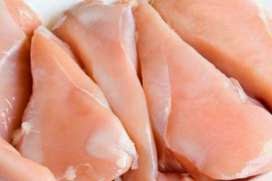China has had a huge impact on world food markets in recent years, as rising demand for meat and other agricultural products has pushed up international food prices.
India’s population is almost as large as China’s and is growing more rapidly. Like China, India’s economy has grown at a fast pace, and higher incomes have resulted in changes in dietary patterns. If growth in Chinese demand for agricultural imports eventually slows down, some point to India as another possible future engine of growth for world food demand.
India, of course, is not China. Average incomes are much lower in India than in China, and India’s population consumes very little meat for both cultural and economic reasons. India now is not a major importer of most agricultural products and is actually a net exporter of wheat, rice, corn and beef.
India is, however, the world’s largest producer and consumer of milk — from cows, buffalo and goats — and the dairy industry is expanding very rapidly. Poultry production is small but expanding, and consumers are buying more high-value foods as their incomes increase.
A recent joint report from the Organization for Economic Cooperation and Development (OECD) and the Food and Agriculture Organization (FAO) of the United Nations highlights the Indian food sector.
■ India accounts for one-fourth of the world’s food-insecure people. The share of the population without enough to eat is declining, but 213 million Indians remained undernourished between 2010 and 2012.
■ Per capita food consumption is increasing in India but is very low by global standards. The average person in India consumes only 73 percent as many calories as the average person in high-income countries and only 59 percent as much protein.
■ More than half of the people employed in India are farmers or agricultural laborers. However, agriculture accounted for only 14 percent of India’s gross domestic product in 2012.
■ India has about the same amount of arable and permanently cropped land as the United States. While the United States has about 2 million farms, however, India had 138 million agricultural holdings in 2010-11. Most of those are very small — 117 million had less than 5 acres of land.
■ The country has a complex set of policies affecting the food sector. Tariffs reduce imports, support programs set minimum prices to farmers and inputs are subsidized.
■ India uses far more fertilizer than the United States, in part because of government subsidies. India’s fertilizer subsidy is expected to cost the country’s taxpayers $11 billion this year, more than the United States spends on the crop insurance program in a typical year.
■ A new policy will provide fixed amounts of heavily subsidized wheat, rice and other grains to two-thirds of the country’s population.
What happens in a country with almost four times the population of the United States can have a large effect on the global food system. Even a proportionally small change in India’s supply-and-demand balance can have big positive or negative effects on global farm commodity prices.
At least for now, though, it appears India is not another China. In the next few years, India does not appear likely to have the same magnitude of effects on world food markets as its neighbor.

